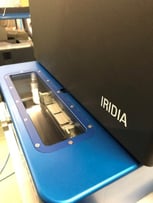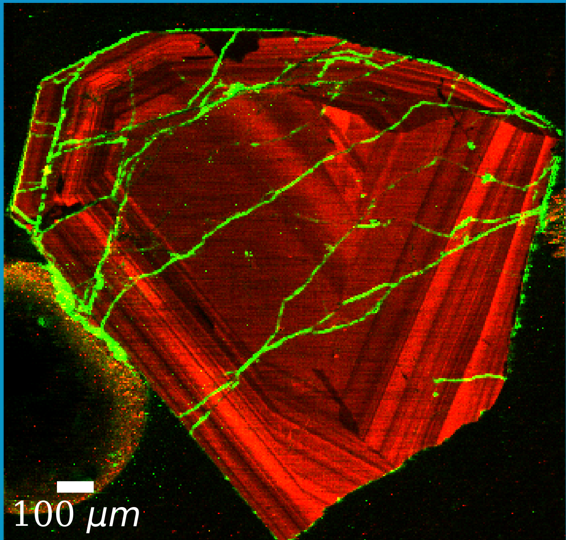This past week saw the publication of yet another exceptional academic paper from Prof Vanhaecke’s A&MS research group at Ghent University.
 The paper in Analytical Chemistry is titled “Sub-µm nanosecond LA-ICP-MS imaging at pixel acquisition rates above 250 Hz via a low-dispersion setup” and is authored by Dr. Stijn van Malderen, Dr. Thibaut Van Acker and Prof. Frank Vanhaecke. It provides an in-depth characterization of the Cobalt ablation chamber now released by Teledyne Photon Machines as an integral part of the Iridia laser ablation system.
The paper in Analytical Chemistry is titled “Sub-µm nanosecond LA-ICP-MS imaging at pixel acquisition rates above 250 Hz via a low-dispersion setup” and is authored by Dr. Stijn van Malderen, Dr. Thibaut Van Acker and Prof. Frank Vanhaecke. It provides an in-depth characterization of the Cobalt ablation chamber now released by Teledyne Photon Machines as an integral part of the Iridia laser ablation system.
After more than 18 months of extensive field testing there is a wealth of data presented, clearly demonstrating the importance of scientific collaborations when developing analytical laser ablation capabilities and giving real credibility to the commercial specifications highlighted in Teledyne’s marketing literature. This system is truly engineered by science.
Signal Pulse Response Profiles: the duration of the signal pulse response observed upon a single-shot ablation event on NIST SRM 612 glass is shown to be 1.0 ± 0.1 ms at 10% of the maximum peak height (FW0.1M). With a biological matrix more material is removed from the sample per shot and the width of the single pulse response profile is typically twice as wide. This allows imaging applications at unprecedented speed: at 500 pixels/s, e.g., a 1 mm2 sample area can be scanned with a step size of 1 µm in approximately 35 min.
Analytical Reproducibility across the chamber: Sampling homogeneity across the ablation chamber was demonstrated by carrying out U-Pb dating of a Plešovice zircon standard that was placed in all 4 corners and the center of the sample holder. The vertical positions of these samples also varied by ± 0.5 mm, and to provide the most robust data set the sample was taken out of the ablation chamber after each test; the ablation chamber was exposed to the atmosphere; and the system was subjected to multiple cycles of high vacuum evacuation and flushed completely. These real-world tests show what a typical user can expect when running the system in their lab. The resulting variation in signal intensity across all the different vertical positions was shown to be < 3% RSD showing a carefully controlled distance between cell extract and sample is important for ultimate data quality, but the design is not overly sensitive to height variations, nor repeated opening and flushing of the cell. When optimized, the Pb/U ratios an average bias < 0.8% was demonstrated between all sample locations, representing the typical RSD data a user can expect.
Wavelength considerations: an important part of this work was centered on explaining why 193 nm deep-UV lasers are the most appropriate tools for ultra-fast bio-imaging applications, and how this set-up is highly suited for detailed imaging of biological tissue when selectively ablated from a glass substrate. The high transport efficiency allows sub-ppm limits of detection at a 1 µm spot size with present-day ICP-MS instrumentation. To push the boundaries further this work also investigated the capabilities of ablating a sub-µm laser spot on the sample surface that generated a 0.6 µm diameter crater. Even at these extremes, the variation in single-shot crater volumes was still shown to be only to ≈5 % RSD. The paper goes on to describe an experiment where this sub-µm ablation spot was used to study the distribution of endogenous Zn in biomaterials generating a highly detailed elemental map. More detailed information regarding wavelength considerations can be found in another recent publication from Prof Vanhaecke’s A&MS research group.
Engineered by Science: this paper is a perfect example of the importance of scientific collaborations when developing commercial analytical instrumentation. Engineers and scientists have been working closely for almost two years to understand and perfect the design of the Cobalt cell so that the growing community of laser ablation scientists can spend more of their valuable time developing their own applications instead of trying to understand and then work around fundamental limitations of the hardware they have bought.

Figure 1. Magmatic zircon from the Eastern Carpathians (Romania), courtesy of Dr. Gavril Săbău, Geological Institute of Romania.
Please contact us for more information on Laser Ablation Systems.


